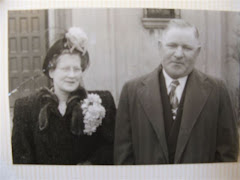Friday, March 21, 2008
Irish Historical Mysteries: The Flight of the Earls
Irish Historical Mysteries: The Flight of the Earls: "rish Historical Mysteries: The Flight of the Earls
The Flight abroad in 1607 of the Earls of Tyrone and Tyrconnell and their followers is generally reckoned to mark the end of Gaelic Ireland as a distinct political system. Yet there has never been agreement on the reasons why the Earls fled at that particular time, and today the debate is still ongoing. Before examining the various accounts of the Flight, let us first look at the historical background.
It was Henry VIII and his Tudor successors, Edward VI, Mary and Elizabeth I, who completed the conquest of Ireland begun by the Anglo-Normans four centuries before. Prior to the time of the Tudors, most parts of Ireland lay outside English control, being dominated either by Gaelic lords such as O'Neill and O'Donnell, or descendants of the Anglo-Norman conquerors such as Fitgerald and Butler. Following the destruction of the Leinster Fitzgeralds in 1535 in the wake of the revolt of Silken Thomas, Henry was in a position to try more conciliatory methods, designed particularly to persuade the Gaelic and Gaelicised Anglo-Norman lords to give up their distinctive ways and submit to the Crown. The policy of 'Surrender and Regrant', whereby Irish lords submitted to English control and received English titles in return, was a considerable success, examples being Burke, created Earl of"
The Flight abroad in 1607 of the Earls of Tyrone and Tyrconnell and their followers is generally reckoned to mark the end of Gaelic Ireland as a distinct political system. Yet there has never been agreement on the reasons why the Earls fled at that particular time, and today the debate is still ongoing. Before examining the various accounts of the Flight, let us first look at the historical background.
It was Henry VIII and his Tudor successors, Edward VI, Mary and Elizabeth I, who completed the conquest of Ireland begun by the Anglo-Normans four centuries before. Prior to the time of the Tudors, most parts of Ireland lay outside English control, being dominated either by Gaelic lords such as O'Neill and O'Donnell, or descendants of the Anglo-Norman conquerors such as Fitgerald and Butler. Following the destruction of the Leinster Fitzgeralds in 1535 in the wake of the revolt of Silken Thomas, Henry was in a position to try more conciliatory methods, designed particularly to persuade the Gaelic and Gaelicised Anglo-Norman lords to give up their distinctive ways and submit to the Crown. The policy of 'Surrender and Regrant', whereby Irish lords submitted to English control and received English titles in return, was a considerable success, examples being Burke, created Earl of"
Subscribe to:
Post Comments (Atom)





.jpg)

.jpg)

.jpg)


No comments:
Post a Comment